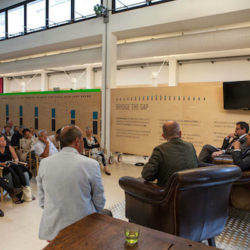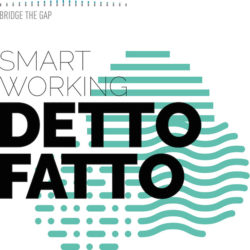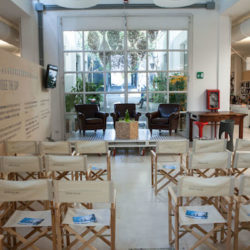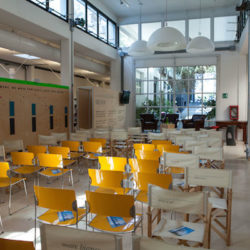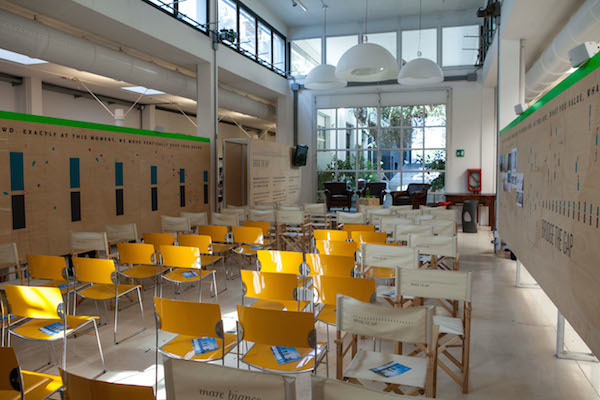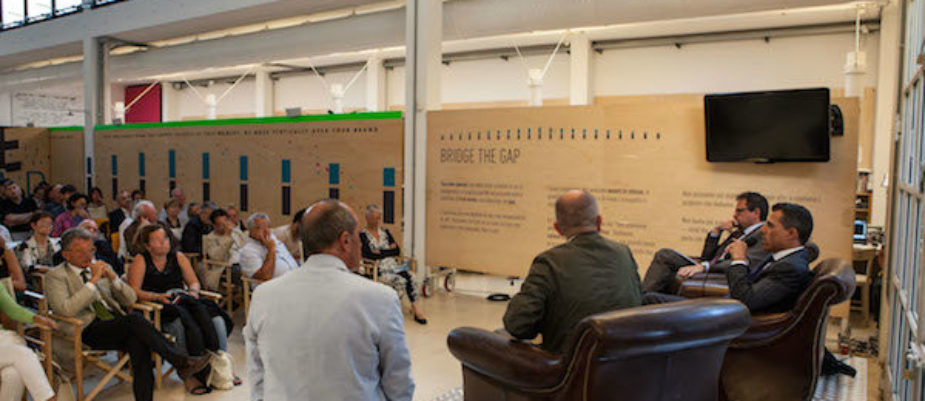
Space – People – Technology. This is the new smart working’s keywords outlined in the meeting Smart Working: Detto, Fatto, organized by DEGW and Lombardini22. Smart working is not something about trends or styles, but is a proper economic and management topic, strictly linked to the company’s goals: a breakthrough towards an innovative business culture based on people management and capable to release energy.
“Today we are going through a real metamorphosis. At this stage, old rules don’t work anymore, but at the same time we are not ready to write new ones. Someone says there will be very few of them in the future”, Matteo Barone, managing partner and Employee Engagement of Methodos, opened the conference with these words.
“Once the 3P rule was considered the base of the organization: people, place, performance. You have a person with a potential, you put him in a place, and you expect a performance. But nowadays everything is changing, since the position paradigm is called into question, while the potential is becoming more important.
It is a breakthrough: less constraints, less perimeters and the chance to give space to all the processes that allow the potential in a company to fully express itself”.
Space. Smart working has changed the conception of the workplace.
Designing a new space, the company has to consider new factors, as the time an employee actually spend in the office (50% of the working time average) or which kind of activities he mostly does (team-working or individual).
As Alessandro Adamo, consultant and DEGW’s director, says: “the most important step to take on the way that leads to smart working is the first, in which you talk about the company’s vision and the goals, when you can consider how and how much is worth to go towards this transition”.
Another main topic about the workspace is sharing. The office design has moved away from fixed workstations, and nowadays it is based on the functionality of the space: each environment is made to be used for particular activities.
Some companies has pushed this innovation forward, developing the “no territoriality” concept, where no one, even the HR, has its own dedicated office or workstation. A choice that implies several problems, as secrecy and privacy.
“There is not only the issue of the space, there is also the issue of the way of using the space”, Alessandro Adamo continues. ”When you develop different concepts, you need to change your way of acting in the space as well”.
It is worth to underline also the “space-branding”, a fundamental element for representing the business of the company and to make the employees perceive its philosophy, and the break and in-between areas’ development, made for encourage informal meetings, in line with the new ways of working.
People. Smart working requires a mind changing, most of all in leaders, that have to change the base of their leadership from control to accountability.
One of the main changing we can observe nowadays is that top-down organizations are giving way to bottom-up organizations, as also the evolution of the workspace shows.
The main resistance that a company has to face in the smart working’s transformation is the skepticism and suspiciousness of the people, as we already pointed out in the WOW! Agile Working Island’s Jelly Sessions.
Every project has to answer to the question: how is it possible to turn this fear into enthusiasm?
Designing and engagement, listening and communication, people management and performance management: these are the keywords that must lead every change.
“When the pilot project starts, no one wants to be selected. However turning something you fear into something different bring some indisputable organizational benefits”, Alessandro Adamo concludes. “Once a manager of a company said to me “the mood of the people is changed”. Knowing precisely the effect that this has on numbers is very difficult, but when you change the mood, you automatically affect in a positive way the spirit of the team and the worker’s perception of the organization. And automatically you increase the productivity”.
Technology. Technology is the main driver towards this fast-paced changes, that are becoming day by day more compulsory for all the companies.
Technology has already allowed us to make the working time more flexible and to enlarge the space of the company by something we can call “digital expansion”.
“Wherever I can connect to the company’s server, in that moment it is like I am there”, Michele Dalmazzoni, Cisco Italia’s collaboration country leader and business transformation Cisco Italia.
There are two rules leading the development of technologies for office: they have to be easy-to-use and all integrated in only one device.
“It is like selling a toy”, Michele Dalmazzoni says. “You don’t have to design a toy only to make the mum happy, but also the kids. That’s why you can’t create difficult and cutting-edge technological products that only the company’s IT can use. The most important thing is the user experience, even more than other fundamental parameters such as safety and innovation”.
Text by Gabriele Masi.

